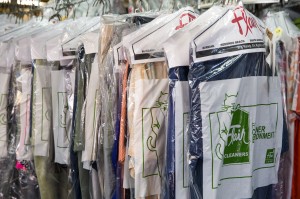
Growing up in the Midwest, a sure sign of winter was the ritual of packing away summer clothes and unpacking winter wardrobes, including woolen clothing. To this day, the first sweater of winter reminds us of the familiar scent associated with this ritual: mothballs.
Today, despite the memories, it’s clear that mothballs are not the safest method of preventing and eliminating moths. They contain paradichlorobenzene (also known as 1,4 dichlorobenzene), which comes with a long list of warnings like “avoid contact with skin and clothing” and “avoid breathing the fumes.” Naphthalene, the other pesticide commonly used in mothballs, is even worse.
So, how can you prevent moths or fight an infestation? First, it’s important to find the specific source of the infestation, not just the room, but the clothing that has been most affected, as it’s likely where they nested. Moths also like to hide in dark corners of a closet or room that offer some protection. In one home, moths had nested in several books that rarely were taken off the shelves and had eaten the pages of the book for food.
The next step is to clean, treat or discard infected items and their containers, preferably with non-chemical methods.
- Shake and brush the clothes, then hang them in the sun for several hours.
- Wrap clothing in a sealed bag and freeze below 18° F for several days.
- Dry clean.
- Vacuum rugs and furniture and throw out the vacuum bag when finished.
- Thoroughly clean the room where the moths were found paying special attention to hidden areas, like under furniture and around moldings.
To avoid re-infestation go through woolen clothing that may not have been worn recently, and either donate it or bring it to Flair Cleaners for a thorough cleaning with our non-toxic GreenEarth cleaning process. For moth-free storage, pack the clothes in sealed bags with natural cedar blocks.





Leave a Comment